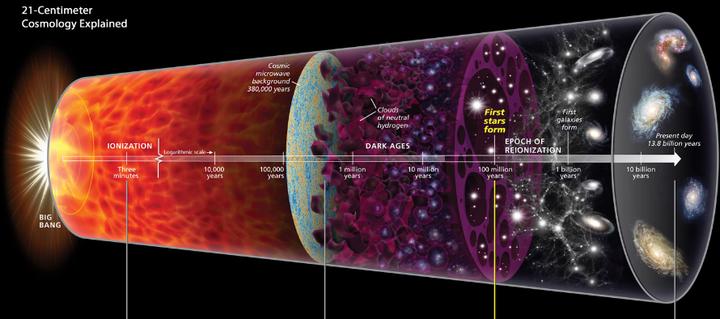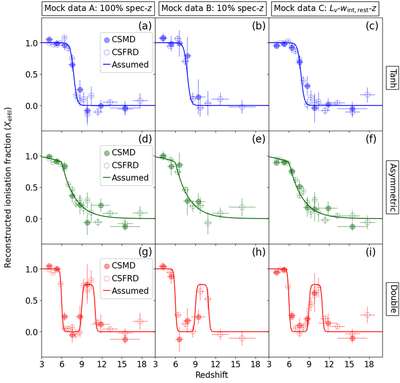 Image credit: [Roen Kelly/Discover magazine]
Image credit: [Roen Kelly/Discover magazine]
The cosmic reionization is the latest phase transition of the Universe from a neutral to an ionized state. The reionization is supposed to have happened in the early Universe caused by the first formation of stars and galaxies. There, revealing the reionization is at the frontier of the galactic astronomy. Recently, the cosmic microwave background observations revealed the averaged epoch of the reionization around the redshift z~8. Quasar and gamma-ray burst observations indicate that the reionization completed at around redshift z~6. However, the detailed history of the cosmic reionization history remains unknown.
To overcome this problem, I propose a new method to reveal the cosmic reionization history as a function of redshifts using future fast radio bursts (FRBs). FRBs are bright radio pulses happening at distant galaxies. Their unique observable, dispersion measure, allows us to measure the amount of ionized material in the intergalactic medium. Therefore, FRBs' dispersion measures are sensitive to the cosmic reionization history. I propose to differentiate the dispersion measure against redshift, i.e., dDM/dz. This quantity is proportional to the ionization fraction of the intergalactic medium. Therefore, our method allows direct measurements of the cosmic reionization as a function of redshifts without any assumption on its functional shape. The next-generation radio telescope, Square Kilometre Array, will find a massive amount of FRBs in near future . Our simulations predict that FRBs in the era of Square Kilometre Array will finalize the cosmic reionization history (Figure).

This project is based on the following publication.
Tetsuya Hashimoto, Tomotsugu Goto, Ting-Yi Lu, Alvina Y. L. On, Daryl Joe D. Santos, Seong Jin Kim, Ece Kilerci Eser, Simon C.-C. Ho, Tiger Y.-Y. Hsiao, and Leo Y.-W. Lin, 'Revealing the cosmic reionisation history with fast radio bursts in the era of Square Kilometre Array' , accepted for publication in Monthly Notices of the Royal Astronomical Society, (2021). I won the best oral presentation award in the international conference, 'NEP conference 2020: Multi-Wavelength Astronomy Collaboration towards the New Era with Deep Survey Data (2020)' based on this project.